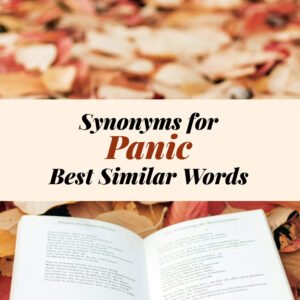Sometimes we use the word easy in many situations, like when talking about tasks, activities, or challenges. However, there are many other words that can express the same idea. Words like simple, effortless, smooth, and straightforward can make your speech or writing more interesting. In this article, we will explore 19 other ways to say easy, giving you examples and explanations to use them correctly in daily life.
| Synonym | Meaning | Example |
|---|---|---|
| Simple | Not complicated, easy to do or understand | The recipe is simple, even beginners can try it. |
| Effortless | Done without hard work or struggle | She completed the test in an effortless way. |
| Smooth | Free of difficulties or obstacles | The meeting went smooth and finished early. |
| Straightforward | Easy to understand or follow | The instructions are straightforward for everyone. |
| Basic | Fundamental, not advanced | The course teaches basic skills for writing. |
| Manageable | Able to handle without stress or difficulty | The homework is manageable in one hour. |
| Painless | Causing no difficulty or problems | Fixing the problem was painless and quick. |
| Undemanding | Not needing much effort | The job is undemanding and does not stress you. |
| Child’s play | Very easy to do, like a game for children | For her, sewing is child’s play. |
| Lightweight | Not heavy or complicated | The project is lightweight and easy to finish. |
| Breezy | Done easily with no struggle | His explanation was breezy and everyone understood. |
| Quick | Done in a short time without difficulty | The exam was quick and finished before lunch. |
| Effort-free | Done without using much effort | She made an effort-free decision about her career. |
| Uncomplicated | Not complex or confusing | The design of the app is uncomplicated and friendly. |
| Clear-cut | Very easy to understand or define | The rules are clear-cut and everyone followed them. |
| Straight | Not twisted or difficult | The path was straight and easy to walk. |
| No-brainer | Needs little thought, very obvious | Choosing this option was a no-brainer. |
| Smooth sailing | No problems or difficulties | After solving the first problem, it was smooth sailing. |
| Light work | Not difficult or heavy task | Washing the dishes is light work for her. |
19 Different Ways to Say EASY: Another Word for EASY
Simple
The word simple means that something is not complicated and can be done without difficulty. It is very useful when you want to explain something that anyone can understand or do. Simple can be used for tasks, instructions, ideas, or anything that does not need much effort. Using simple things in daily life can save time and make work more comfortable. For example, if a recipe is simple, you do not need many skills to cook it. People like simple solutions because they do not create stress or confusion. Simple is also very friendly when explaining ideas to friends, classmates, or colleagues.
- The math problem is simple, anyone can solve it.
- She wore a simple dress for the party.
- The instructions are simple to follow.
Effortless
Effortless describes something that you can do without much work or strain. When an action is effortless, it feels natural and does not make you tired or worried. People enjoy effortless experiences because they are relaxing and enjoyable. It can refer to completing a task, learning something, or even doing an activity. Effortless work is often the result of practice or skill, but it can also describe situations where everything goes smoothly without any extra energy. Using effortless in your speech shows that you recognize when something is easy and pleasant for someone.
- She played the piano in an effortless way.
- Writing emails is effortless for him.
- The solution came effortlessly to the team.
Smooth
The word smooth is used when something happens without any obstacles or difficulties. Smooth means everything goes well, without problems or interruptions. For example, a smooth journey is one without traffic, delays, or stress. A smooth process means the steps are easy to follow, and no one gets confused. Smooth is also helpful when describing activities or situations where everything feels calm and controlled. People like smooth experiences because they save time, energy, and frustration. You can use smooth in talking about work, travel, communication, or any activity that flows nicely.
- The project went smooth from start to finish.
- Her presentation was smooth and confident.
- The car ride was smooth without bumps.
Straightforward
Straightforward means something is very easy to understand or follow. It is useful when you want to explain instructions, steps, or rules. Straightforward things do not need extra thinking or effort to figure out. People often appreciate straightforward explanations because they save time and avoid confusion. You can use this word for tasks, conversations, rules, or directions. It shows that the process is open and clear, so anyone can do it without stress. Using straightforward in your speech or writing helps others trust the information you give.
- The instructions are straightforward to complete.
- His answer was straightforward and honest.
- Following this guide is straightforward.
Basic
Basic refers to something that is simple and fundamental. Basic skills, knowledge, or steps are the first things people need to learn before doing more difficult tasks. When something is basic, it is not complicated, advanced, or hard. Using basic methods or tools makes work manageable and understandable. Basic also helps when teaching or explaining to beginners because it starts with easy concepts. It is a good word to describe the beginning level of anything, from learning a subject to cooking or doing exercises.
- The course covers basic grammar for beginners.
- She knows basic first aid skills.
- Cooking rice is basic and easy.
Manageable
The word manageable describes tasks or situations that can be handled without stress. When something is manageable, it is possible to finish it with the resources, time, and energy you have. It does not feel overwhelming or impossible. Using manageable tasks in work or study helps you stay organized and calm. It also shows that you are confident in completing it without problems. Manageable is helpful when dividing work into parts or planning small steps toward a goal. People like manageable tasks because they feel achievable and realistic.
- The workload is manageable this week.
- The trip is manageable for beginners.
- Cleaning the house is manageable in two hours.
Painless
Painless is used when something causes no trouble, problems, or stress. It is like saying a task or action does not hurt physically or mentally. Painless situations are comfortable and easy to go through. Using painless in conversation helps show that an experience is not scary or difficult. For example, learning a new skill can be painless if the steps are easy. Painless can also describe solving problems, completing tasks, or dealing with challenges without worry. It gives confidence to people that they can handle something without negative effects.
- Fixing the car was painless for him.
- The test was painless and short.
- Moving to a new home was painless.
Undemanding
The word undemanding describes work or tasks that do not require much effort or attention. When something is undemanding, it is relaxed and does not make you tired. People enjoy undemanding jobs or activities because they do not feel pressure. Undemanding tasks are good for beginners or people who need a calm environment. This word can also describe hobbies, jobs, or activities that are enjoyable without stress. Using undemanding in your speech shows that you understand the comfort of low-pressure tasks and situations.
- The assignment is undemanding for students.
- Gardening is undemanding but fun.
- Her new job is undemanding and calm.
Child’s Play
Child’s play is a phrase used when something is very easy to do, like a game for children. It shows that the task is simple, quick, and does not need much skill. Using child’s play makes your language friendly and informal. People often use it to describe things they can do without thinking. Child’s play is fun to say and helps show that an activity is enjoyable and stress-free. It can be used for work, games, exercises, or small problems that are not difficult at all.
- Solving this puzzle is child’s play.
- For him, driving a car is child’s play.
- Cooking pasta is child’s play.
Lightweight
The word lightweight is used to describe tasks, projects, or activities that are not heavy or difficult. It shows that something can be handled easily without stress or struggle. Lightweight also suggests that it is fast to complete and does not take much energy. People like lightweight work because it feels manageable and does not tire them out. Using lightweight in your writing or speaking helps indicate that the task is comfortable and not a burden. It can describe jobs, projects, or responsibilities in school, work, or home life.
- The project is lightweight and quick to finish.
- His responsibilities are lightweight this week.
- Writing a short essay is lightweight.
Breezy
Breezy describes something done easily, without stress or trouble. It gives a feeling of relaxation and comfort. Breezy situations are pleasant and enjoyable because everything goes smoothly. Using breezy in your speech or writing shows that the experience is effortless and happy. It can describe talks, work, explanations, or even daily activities. Breezy also suggests a cheerful and confident attitude while doing something. People like breezy approaches because they make tasks less serious and more fun to handle.
- Her explanation was breezy and easy to follow.
- The morning routine is breezy for him.
- Planning the trip was breezy and fast.
Quick
The word quick refers to something done in a short time without difficulty. Quick actions save time and effort, making tasks more efficient. It can describe work, learning, movement, or decisions that are done fast and easily. Using quick in your speech emphasizes speed and ease, showing that the task does not take long or create stress. Quick can also describe solutions that are ready fast and helpful for urgent situations. People like quick results because they are productive and save energy.
- The exam was quick and finished early.
- She gave a quick answer to the question.
- Quick exercises help improve fitness.
Effort-free
Effort-free means that something can be done without using much energy or struggle. It is similar to effortless but emphasizes the lack of effort even more. Using effort-free helps describe actions, decisions, or tasks that feel natural and easy. People like effort-free experiences because they do not create fatigue or worry. Effort-free can also describe learning or problem-solving when the steps are smooth and enjoyable. Using this word makes your writing and speaking show that the process is comfortable and stress-free.
- Choosing the design was effort-free.
- The app makes editing photos effort-free.
- Preparing the meal was effort-free.
Uncomplicated
The word uncomplicated describes tasks, ideas, or processes that are not confusing or complex. It shows that something can be understood or done easily. Uncomplicated work or steps save time and prevent stress. It is useful for explaining instructions, rules, or simple solutions. People appreciate uncomplicated methods because they make daily life more manageable. Using uncomplicated in your language indicates that the situation is open and approachable, making others feel confident to follow or do it.
- The instructions are uncomplicated to follow.
- Setting up the device is uncomplicated.
- Learning the basics is uncomplicated.
Clear-cut
Clear-cut means very easy to understand, define, or follow. It is useful when something is obvious and leaves no confusion. Clear-cut instructions, rules, or situations are direct and simple to handle. Using clear-cut in your speech shows that the process is transparent and manageable. People prefer clear-cut information because they do not need to guess or think too much. Clear-cut also helps avoid mistakes and makes tasks faster to complete.
- The rules are clear-cut for everyone.
- His decision was clear-cut and fair.
- The plan is clear-cut and easy to follow.
Straight
The word straight can describe something not twisted, complicated, or difficult. It shows that a path, idea, or process goes directly from start to end. Straight tasks are easy to follow and finish without confusion. Using straight is helpful when describing directions, steps, or actions that are simple and direct. People like straight approaches because they avoid unnecessary steps and make work faster. Straight also gives a sense of clarity and confidence in doing the task.
- The road is straight and easy to drive.
- The path to success is straight and clear.
- The explanation was straight to understand.
No-brainer
No-brainer is used when a decision or task needs very little thought because it is obvious or very easy. It is an informal and fun way to describe simple situations. Using no-brainer shows that something is so easy anyone can do it without thinking too much. People like no-brainer options because they save energy and time. It can describe work, choices, or solutions that do not need analysis or effort. Using this word makes communication friendly and relaxed.
- Choosing this option was a no-brainer.
- The shortcut is a no-brainer for everyone.
- Accepting the offer was a no-brainer.
Smooth sailing
The phrase smooth sailing means doing something without problems or difficulties. It comes from sailing, where calm waters make travel easy. Smooth sailing can describe work, projects, or life situations where everything goes well. Using smooth sailing in speech shows that the process is comfortable and stress-free. People like smooth sailing because it creates a positive feeling and helps complete tasks faster. It is a fun way to describe easy experiences in daily life.
- After solving the first problem, it was smooth sailing.
- The event went smooth sailing all day.
- The plan continued as smooth sailing.
Light work
Light work describes tasks that are not difficult or heavy. It shows that a task is easy to handle and does not take much effort. Light work is useful in school, jobs, or home activities that can be done quickly and comfortably. Using light work in conversation shows that the task is manageable and not stressful. People enjoy light work because it feels simple and does not cause tiredness. Light work also makes daily life smoother and more enjoyable.
- Washing the dishes is light work for her.
- The project is light work this week.
- Carrying the boxes was light work.

Final Thoughts
There are many ways to say easy, each with its own meaning and use. Using these synonyms can make your speech or writing more lively and interesting. By trying different words, you can express tasks and experiences in unique ways, making communication better and more engaging.








